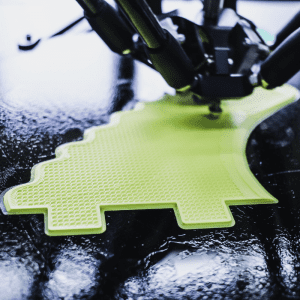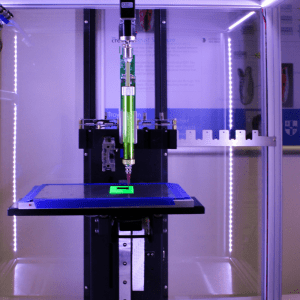Why are so few women pursuing a career in 3D printing?
Alina Tubman, Talent Acquisition Manager at 3D Systems, joins the discussion as we outline why it’s vital to get women involved in the sector to stave off a harmful talent shortage.
Talent shortage concerns
It’s no secret that we’re in the midst of a worsening talent shortage. Over the past ten years, Europe’s tech sector employment has grown three times faster than overall employment, meaning that skilled scientists, engineers and technicians have never been more crucial. Advances made in 3D printing during the same time period means the sector is now competing for talent with other technological fields such as robotics and automation in the race to bring the Internet of Things (IOT) dream to life.
 According to the European Commission, Europe alone could face a shortage of up to 500,000 skilled ICT workers by 2020, as it is creating roughly 120,000 new jobs each year. They also predict that if there were as many women as men in this job market, the EU’s annual GDP could be boosted by €9 billion.
According to the European Commission, Europe alone could face a shortage of up to 500,000 skilled ICT workers by 2020, as it is creating roughly 120,000 new jobs each year. They also predict that if there were as many women as men in this job market, the EU’s annual GDP could be boosted by €9 billion.
3D printing needs women
Globally, the additive manufacturing industry is worth more than $7.3 billion. Across roles in R&D, engineering, sales, service, applications and consulting, marketing, and software disciplines in 3D printing, 87% of employees are male and 13% are female. For 3D printing to continue to grow sustainably, it’s clear that the onus must be placed on getting more girls and women interested and supported in the field.
We need to be positive role models for girls from within the 3D printing industry, and encourage them to participate in STEM classes and extracurricular clubs. Women must become active in the industry and stay connected so that when a professional opportunity arises, they know about it and can be front and center for consideration. Companies within the 3D printing industry can help bridge the gap through participation in community/industry events, conferences, and mentorships. It’s all about relationships – creating them early on and cultivating them over time.
Alina Tubman, Talent Acquisition Manager, 3D Systems.
The lack of females attracted to the STEM industries can be traced back to an early age – research from Microsoft shows that girls who lack STEM role models or encouragement to pursue their interest in STEM subjects are around 25% less likely to continue in the field. This proves that the snowball effect of female role models is important. The more women interested and working in STEM, the more role models and support there will be for the next generation.
Taking action today
A report from Sculpteo shows that the 3D printing job market isn’t very dynamic – 60% of respondents said they weren’t planning on hiring anyone throughout the coming year. However, we predict that the growth of the 3D printing industry will turn hiring into a necessity whether or not companies have planned to make hires; additive manufacturing applications in bioprinting, aerospace and defence, medical and dental, and prototyping and rapid iteration are all gaining traction, meaning more jobs for more employees.
The good news is that skilled female candidates do exist – the key is knowing where to look, but also how to engage with these candidates to encourage them into a typically male-dominated field. By using headhunting techniques honed over years and across specialised industries such as 3D printing, achieving true diversity of thought and gender parity is possible for companies willing to commit to change. There is a huge opportunity for 3D printing to be the leading light for diversity in the STEM industries.
Solutions Driven are experts in sourcing the best candidates in the additive manufacturing sector, with our success spanning the globe for over 20 years. By providing advice and guidance to companies seeking to prepare their companies for the future, Solutions Driven delivers world-class consultative recruitment to some of the world’s top 3D printing organisations.
Co-founded by the inventor of 3D printing, Charles (“Chuck”) Hull, 3D systems has grown into a global additive manufacturing solutions provider focused on helping manufacturers create products and business models never before possible through transformed workflows.





